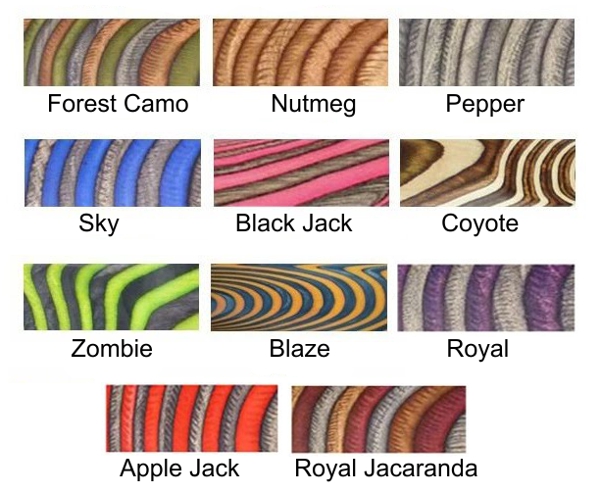 It is a real privilege for us to work with such a wonderful commodity. Turkish Walnut is a becoming quite rare especially the more beautiful grades and is becoming more and more expensive. To help understand where the prices and grades come from, I want to give the following background:
It is a real privilege for us to work with such a wonderful commodity. Turkish Walnut is a becoming quite rare especially the more beautiful grades and is becoming more and more expensive. To help understand where the prices and grades come from, I want to give the following background:
In the previous century Walnut wat widely used for the firearms, construction and furniture trades. The trees have become so rare that the existing trees are very well protected. The different walnuts like French, English, Moroccan end Turkish walnut were named and the patterning and colours were determined by the habitat and minerals in the soil they grew in. Today there is only the Turkish Walnut left that was planted 200 years ago fir their nuts. It is becoming increasingly rare and prices are on the rise.
The other walnuts is the Black and Claro Walnuts found in the USA. In areas these are grown commercially and is available on our local markets. The Black walnut is a very hairy straight grained even coloured wood that is not always very attractive for gun stocks. The Claro walnut shows more patterning and sometimes produces some of the most beautiful stocks we can find.
Stock Blanks can be sourced from a few companies, but we stock Turkish and Claro Walnut for the hunting rifle market, and we also use Coloured Laminated blanks from Boyd's for the target rifles.
On this page we cover the following
Understanding Walnut Grades
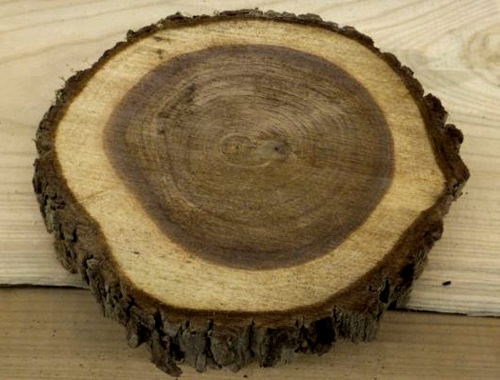
The grade of the blank is determined by the colour and grain character of the wood. This is normally determined from where in the tree the blank is cut. as you will see in the sample picture below, the outer ring called the sapwood is very light in in colour and very dull in texture. The inner core contains the harder darker colour wood which is the older wood that has a higher density carbon deposit.
Normally the lower grades is cut from the straight logs and the position in the log determines the grade. Grade 1 to 5 as follows:
- Grade 1 has 70% sapwood and 30% Core
- Grade 2 has 50% sapwood and 50% Core
- Grade 3 has 30% sapwood and 70% Core
- Grade 4 has 100% Core with little character
- Grade 5 has 100% Core with nice character
- All higher grades are determined by colour and character

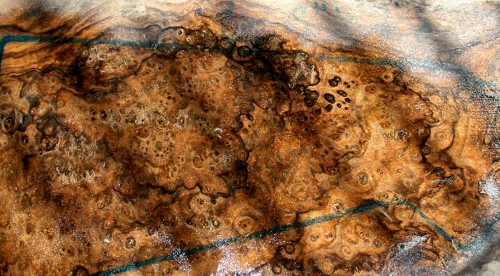
As you can see in the picture there are a lot of colours and patterns to be found in Turkish Walnut. We believe this is determined by ground minerals where it grows and also sometimes fire and weather adds to this character. The root of the tree contains the best grade wood but it is not very strong because no grain exists there, as can be seen in the image.
In the image to the left you can also see that they cut long and short blanks. the shorter blanks are used when 2 piece stock are made like Double rifles and shotguns. The longer blanks are used for Bolt action rifles where the length is required. Finding long blanks that has full character is difficult which makes them more expensive. Shorter pieces are harvested much easier which makes it much more common to find.
Turkish Walnut:
We have mostly Grade 3,4 & 5 Turkish walnut in stock as well as some custom grade C1 to C8. As mentioned these grades are determined by their character. The following sample pictures were borrowed from wood suppliers and we don't have these specific blanks in stock, it is merely to help you with what is available.
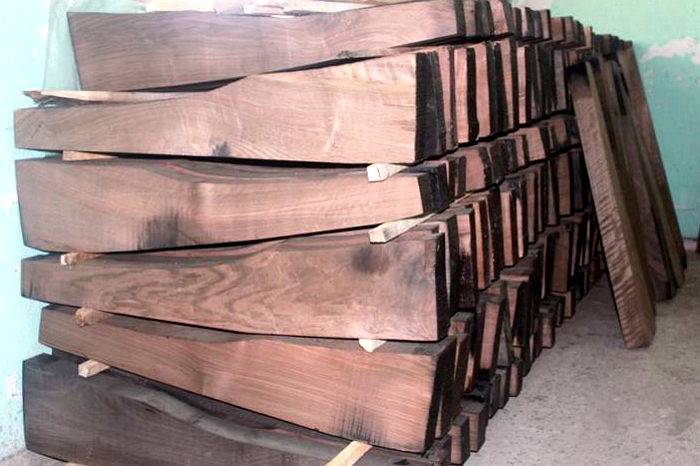
The image has mostly grade 4 and 5 walnut.
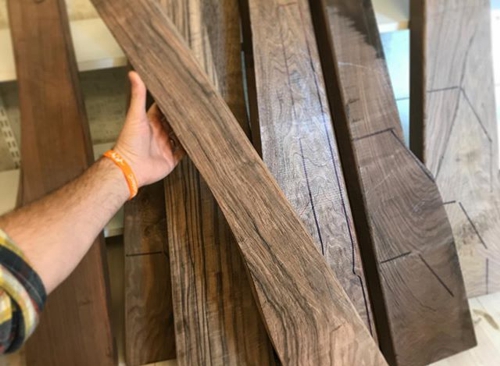
These are samples of the lower to medium custom grades, dark in colour, and very nice grain.
The following 2 imagers is what you can expect from Exhibition grade walnut.
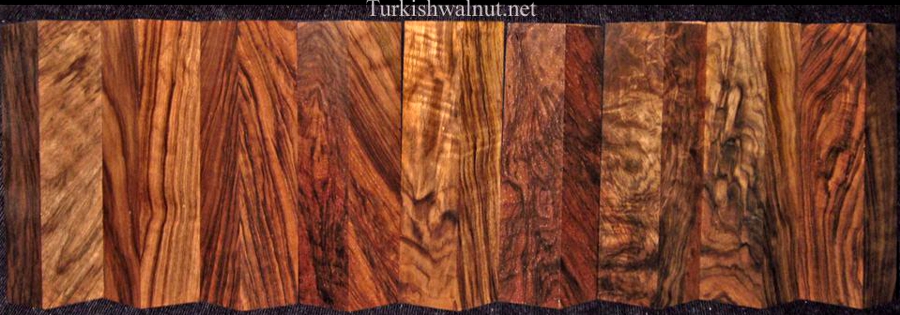
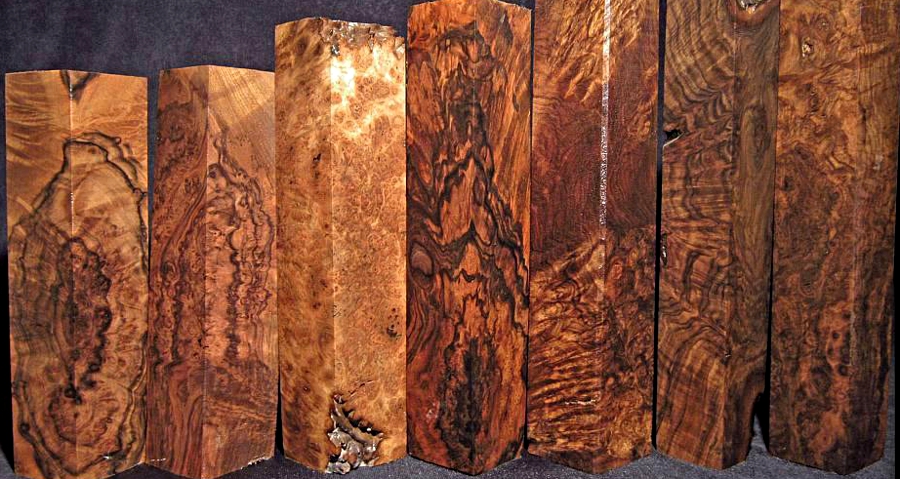
Claro Walnut:
These trees are still commercially grown in the US and harvested around 80 years of age, maybe less. Because the trees are well looked after and grow in ideal circumstances the grain is less dense and the character is a bit bland compared to the Turkish Walnut. It is however still a very nice coloured wood to use and the strength is suitable up to 458 caliber. Before anyone critisizes, I must add that you can also find some extremely beautiful Claro Walnut on the market, but here in SA it is quite hard to find, and we dont have any available now. If you want some of these pieces it can be sourced. We did buy a batch a few years back which you will see in many of our images of rifles we have made in the past.
The picture on the left shows what the wood in stock normally looks like and the one on the right is a sampel of an exhibition grade. This is the least expensive wood available for gun stocks.


Laminated Blanks:
Laminated wood is produced when thin wood veneer sheets are glued to form the block we use for gun stocks. By colouring the different layers it forms very attractive patters when a stock is shaped. We use laminated blanks from Boyds Stocks and it is the best alternative for walnut. They are more expensive than the claro walnut but a lot less than the Turkish walnut.
